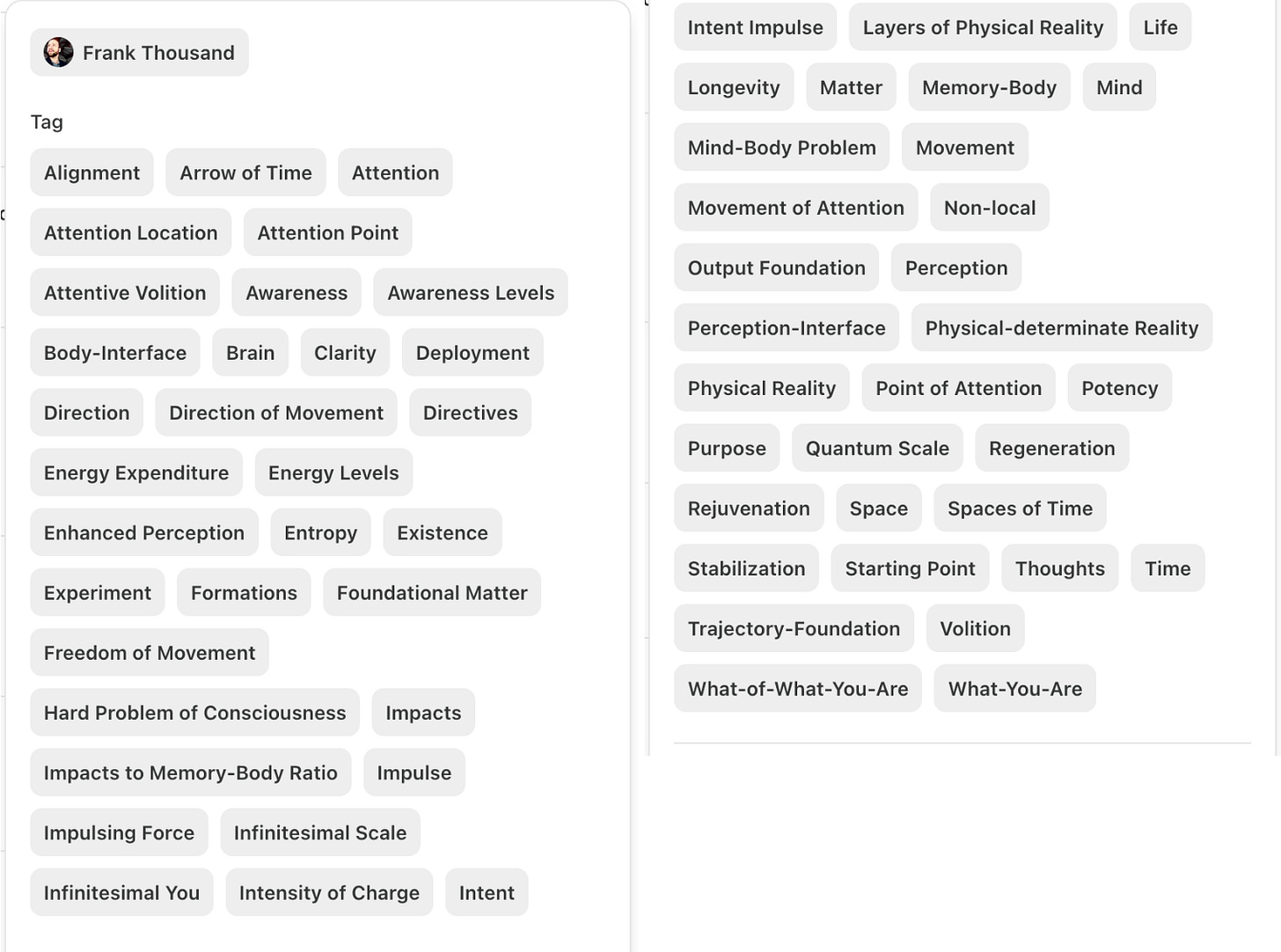Remarks on...
Memory, and how your experience of it is tied to the "device" delivering it to you (cue: not the brain*)
Watch and read the Extended: On Volition and Intent (due to Awareness)
Take the Deployment: Engaging the Mechanism of Communication Between the Body, the Brain, and You
Brought Forth…
Memory, as the word implies, for how we taught ourselves to define it, is a snapshot of something recorded “somewhere somehow.” Something that, when engaged with or unveiled at some moment in time, becomes available to you.
Available to your body first, that is; for how we trained ourselves around it. And only subsequently available to us; through our body, that is.
Your own memory, on the other hand, not so easily recallable or collectible, is a snapshot (if that’s what we could call it) of something else, another kind of “apparatus,” not yet amassed by the body’s domains. Something yet to unveil itself to the body, and even to you, if you’re attentive enough.
Not so easily recallable because we’re used to using our body to perceive memory with. And memories recalled in this way are those participated with and through the body, part of its container-cells, result of uncountable moments of impact that get through, entraining those cells with those “types” of memory, making up for the memory of those cells, their memory-body, and, collectively, the memory-body of the body.
And if the majority of your memories are those you experience through your body—all those “thoughts” and images and moments you remember—all enmeshed with the memory of the body in this “collectiveness” of memory, what are your “original” memories about then?
More so, what are your memories made of? And where are they originating from? And that points to the primary question: What is a memory?! (Not what a memory does.)
Show-How…
How about [calling it] an experience instead?! And an experience that is “lived” through a perspective point (a physical one) that is different at times depending on where that experience is kicked off.
And in the event of having an experience we’re calling memory, we need to verify what we’re using as the “device” that is enabling us to have that experience of memory to start with. Because depending on the device in use (cue to interface-body apparatus), the output of that experience, and thus the imprint of it (e.g. throughout the body from within-out, and out into the world), its “memory,” will be different; it has to be.
That’s how we know that memory comes accompanied by it, the device delivering its output. And that’s also how we know how to trace the path back into its very source, what initiated it, and with it, the “terrain” it used to get there (its arrival point within the device of choice) in order to have it delivered as an experience, its output.
Good to Know…
The body’s pool of impacts (those of which hit, and continue to hit the body) become memory. The same thing happens with impacts that come directly from you toward the body.
And “from you” I mean, within the body (i.e., that conglomerate of particles placed inside the body at a different scale, your point of attention), “impulsing” it through, out into its environments (i.e, directly into its cells and in-between).
The choice of source (i.e., what’s impulsing what and from where) becomes yours when you know what to do. And guess what?! That’s what we’re here for!
A Question (or two)…
Is there a thought you would like to share or question you would like to ask?!
Out of the topics (↓) I touched upon so far (or haven't yet), is there one (or two) you would like to see Extended?
Let me know in the comments below.
* Also read my answer to the “not the brain” cue.


I was asked why "not the brain," mentioning the cue I hinted at on the topic–title of this Remarks on, referring to the device delivering memory to you:
⇒ Because the brain is the most obvious choice when we think of memory. But it's not the only one. Every single cell in your body holds the capacity to "circulate memory" within the world of movement that happens inside itself. When not happening directly from within the neuron itself, the brain is more of a communicator, a translator of these movements signaling into its cells to only then integrate and become part of the brain too, within a group of neurons.
⇒ The main reason for the "not-the-brain[-alone]" cue is to bring your awareness to what happens beforehand, before those movements inside the cell start happening, what is making them "appear," surface in the first place.
⇒ And, of course, as you might've guessed, if you've been following attentively, I'm talking about the infinitesimal foundational matter responsible for impulsing and sustaining that kind of physicality inside the cell to start with.